Sew Something For the Man in Your Life
Create a camp shirt instead of pajamas or a bathrobe.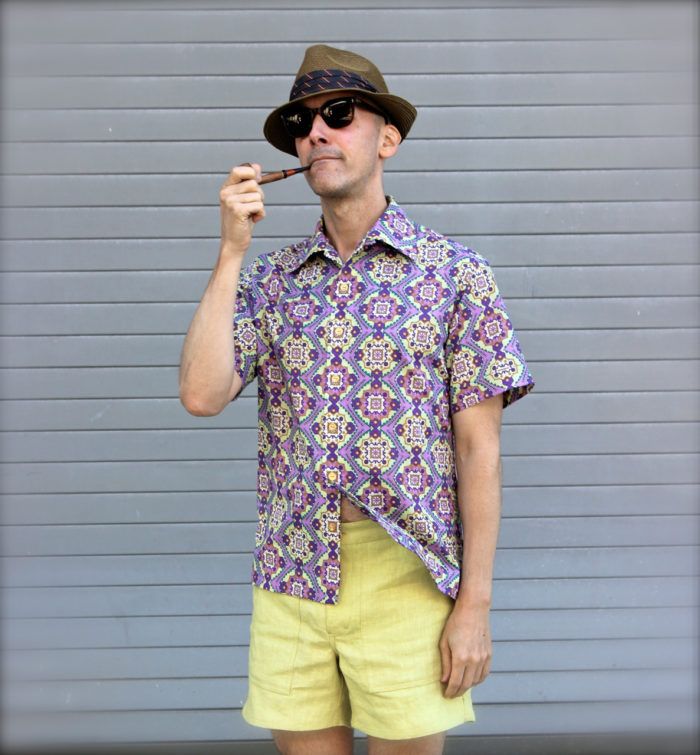
Most menswear patterns out there have tended to be for garments that are easy to fit, easy to sew, and (arguably) make great Father’s Day gifts. This post is for the sewer who is ready to try a menswear project that’s a little more challenging and a lot more rewarding.
Where do you begin?
Consider the man you’re sewing for. Does his wardrobe consist of khakis, jeans, and solid button-front shirts? Will he appreciate and wear what you make? If he won’t, you may find that there’s really no reason to sew for him.
If the man in question is more adventurous, and willing to wear something unique, you’re in luck.
The camp shirt
A great place to start is with a basic camp shirt, also known as a convertible-collar shirt. This is the style most closely associated with Hawaiian and bowling shirts. It’s also the most popular style for women’s blouses, meaning if you’ve ever made a blouse in this style, you already know how to sew one for a man. A convertible-collar shirt is usually short-sleeved, meaning no cuffs or sleeve plackets; has front fold-back facings instead of applied plackets; and lacks a collar stand. It’s an easier-to-construct shirt and, since it’s generally worn loose, it’s easier to fit. Purchased commercially, camp shirts are generally sized from small to extra large, as opposed to by neck size and sleeve length.
Here are some sources for men’s convertible-collar shirt patterns:
Colette Negroni (See the sew-along I created for the Negroni on my blog, Male Pattern Boldness)
You can find the following patterns on Amazon.com and/or Etsy.com:
Kwik Sew 3484
Burda Style 6814
McCall’s 2149
Another option is to shop for out-of-print vintage shirt patterns on sites like eBay and Etsy, where they are easily found and usually inexpensive. Vintage shirt patterns are typically one size only, so you’ll need to know what size you need. Because they are a single size, however, seamlines are printed and easy to follow. I have found vintage patterns to be a tremendous source of inspiration. Convertible-collar patterns were especially abundant in the 1950s and ′60s—little has changed in men’s shirt styles since then.
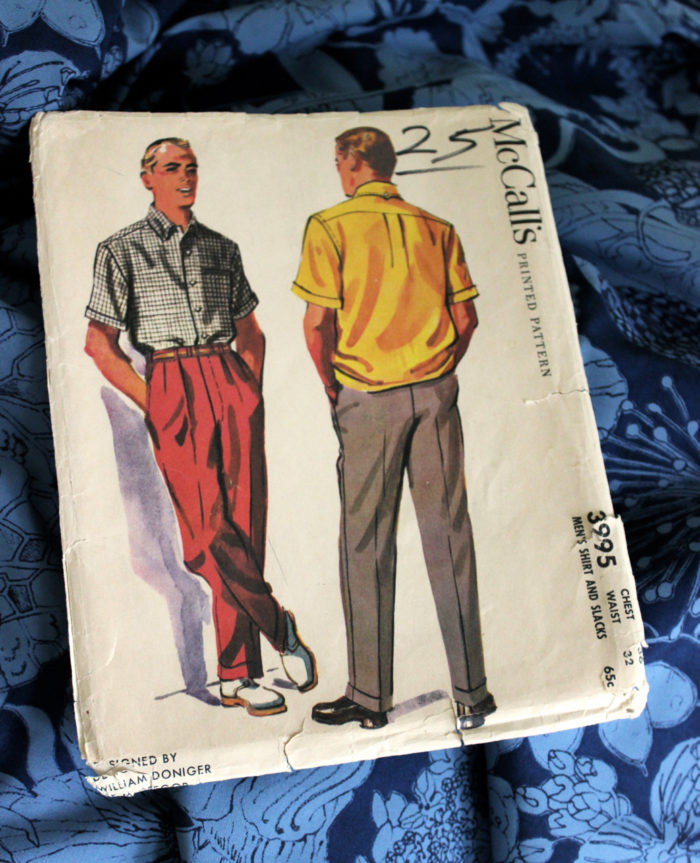
Tools
If you’re a garment sewer, you probably already own everything you need to make a convertible-collar shirt. A few tools I’ve found helpful are a bamboo or plastic point turner, which helps to make collar edges sharp and clean, and a wood point presser-and-clapper combo. The clapper helps to create seams that are flat as can be, as moisture is absorbed into the wood instead of remaining in the fabric. It’s a wonderful tool and definitely worth the investment. (For futher collar refinements, check out “How to Reduce Collar Bulk” and “Sew Perfect Collar Points.”)

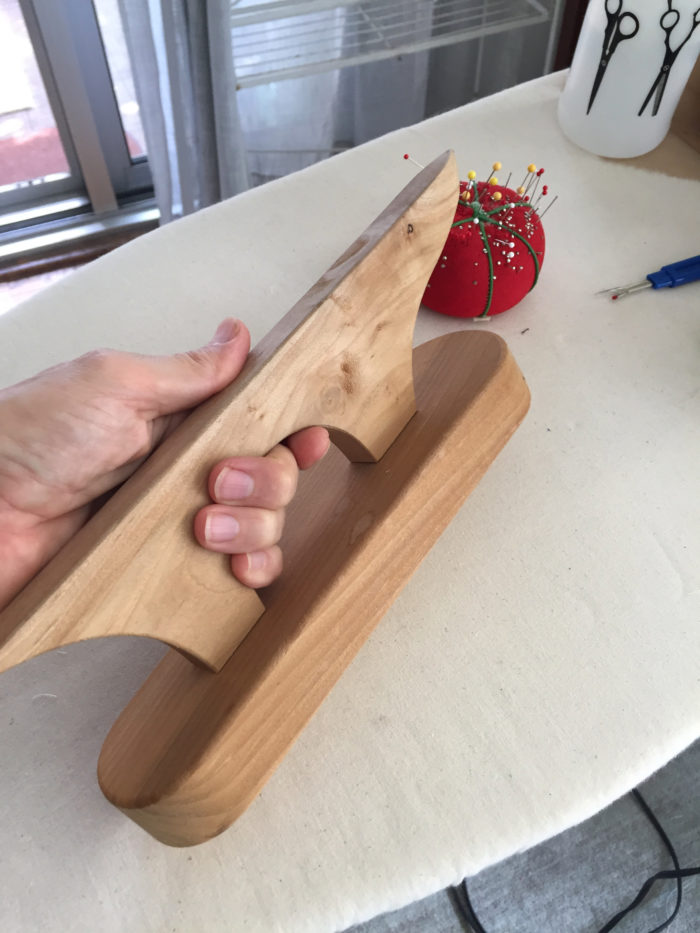
Nothing makes buttonholes as reliably as a vintage buttonhole attachment. These are easy to find on eBay, inexpensive, and can be attached to most low-shank sewing machines that take standard presser feet. The attachment creates a zigzag motion so your machine must be in straight-stitch mode. The most common buttonholers were produced by Singer, Kenmore, and Domestic and come with a variety of different-sized metal or plastic buttonhole templates.
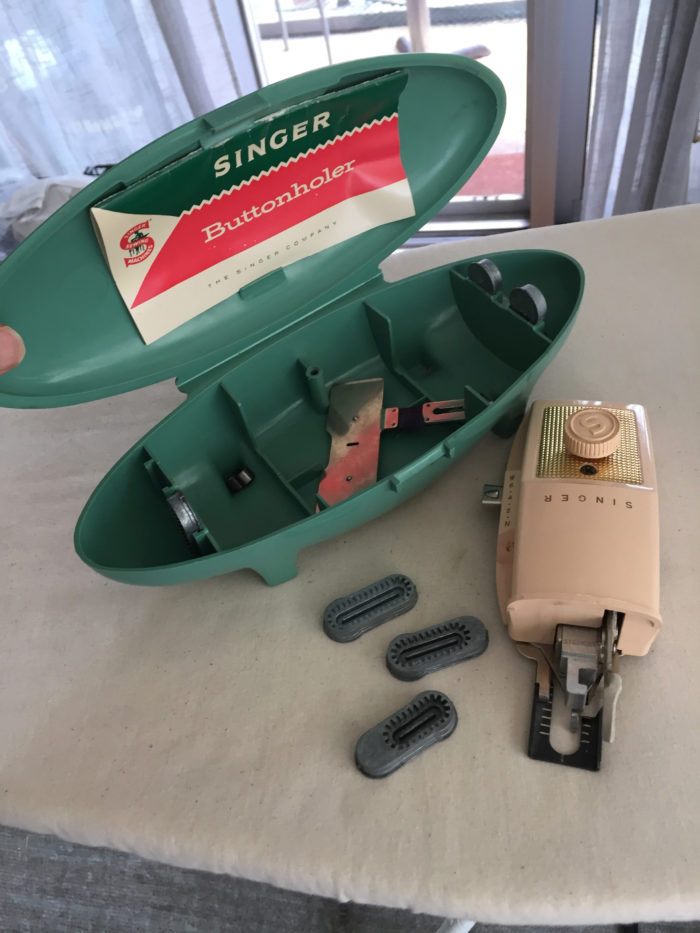
Before cutting a buttonhole open, I always squeeze a drop of Fray Check into the well of the buttonhole. Fray Check, which is liquid nylon, strengthens the buttonhole and makes it less likely to fray over time.
Fabric
Men’s shirts look best, are easiest to make, and last longest when made from cotton fabric. If you’re purchasing fabric online, be sure to read the description to make sure the fabric is an appropriate weight for a shirt. Too heavy and you’re in pants territory; too light and you risk transparency.
Quilting cotton is a great resource for shirts: inexpensive, easy-to-find, and fun. Quilting cotton is designed according to themes, from vintage newspaper ads to Dr. Seuss characters. Does the man in your life love crossword puzzles? Mine does. Make him a crossword puzzle shirt. Is he a Star Wars fan? Make him a storm trooper-themed shirt. Let your imagination run wild.
Here are some shirts, albeit made with collar stands, I’ve made from novelty quilting cotton over the years.
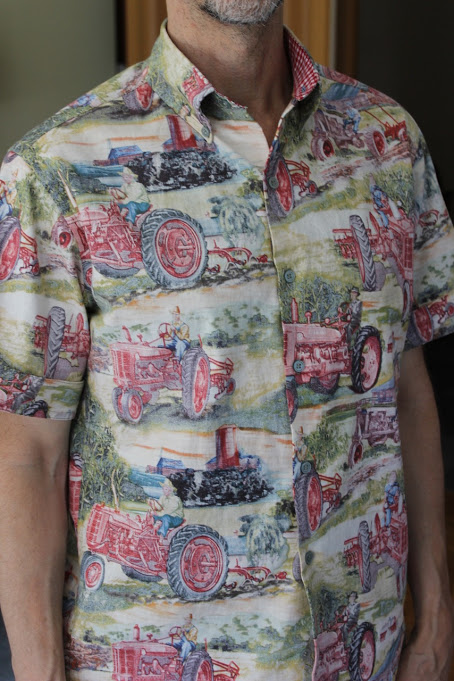
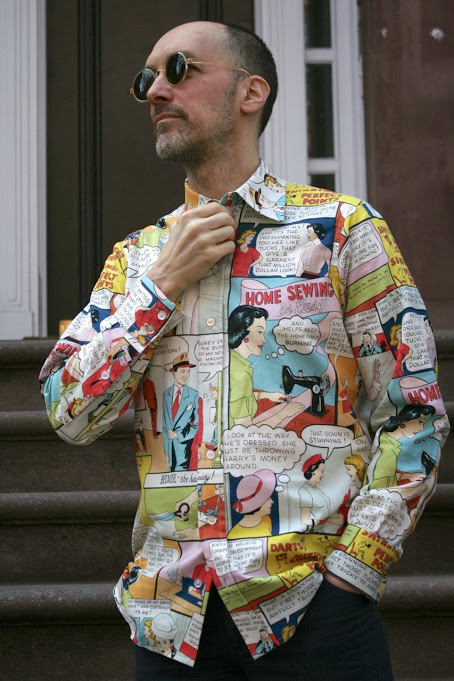
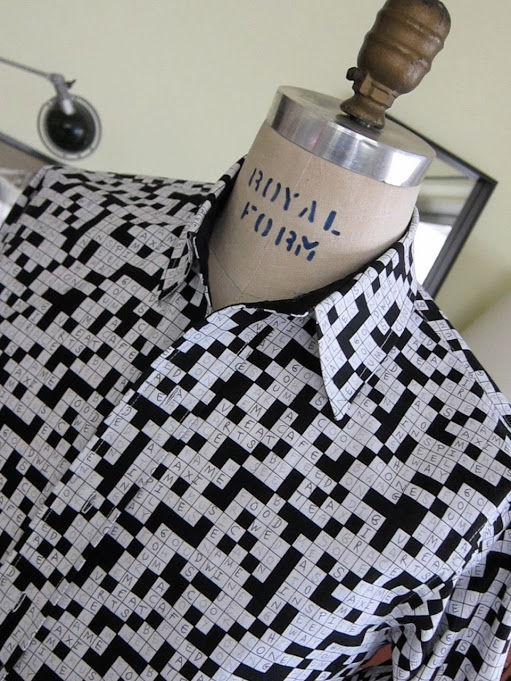
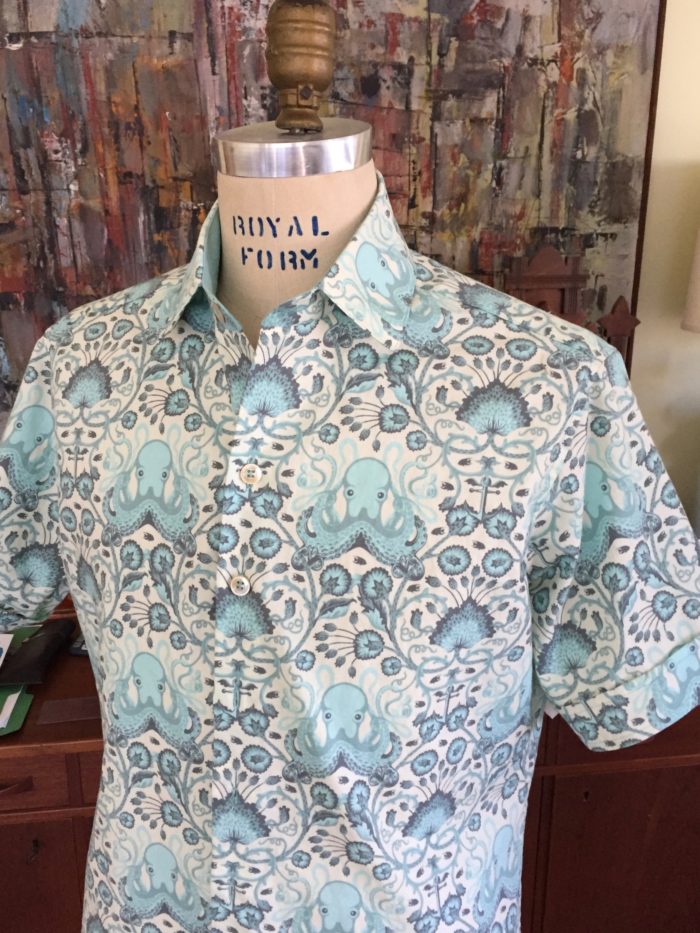
A quilting cotton shirt is, as you can imagine, a great conversation starter. Compared with pajamas or a bathrobe, it’s likely to be worn outside the house.
Most importantly, perhaps, is it’s a fun project that allows you to express the individuality of the man who’s going to wear it. You never know, he may let you wear it, too.






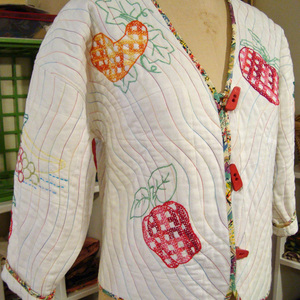

























Very good article, and your shirts are very well done. I especially love the attention to matching the patterns that you obviously spent a lot of time on.
You’ve used a great variety of fabrics!
Also worth noting that a touch of contrast on collar facing, yoke facing and/or button placket facings creates interest and a bit of fun too especially if shirt fabric is conservative..
Very nice article - and nice shirts! Do you have a suggestion on understanding the fit of any of these patterns? I have sewn a few shirts for my husband and find all versions very oversized and not reflecting any fashionable RTW. Is there a trick to understanding the fit before buying a (mens) pattern? Are the vintage patterns trimmer?
I would suggest measuring the dimensions of a ready-to-wear your husband likes the fit of. Compare the measurements to the finished measurements described on the pattern when you choose a size or select a pattern. That should help with vintage or contemporary pattern selection.
To CDH123:
It's hard to be sure how a shirt pattern will fit without looking at it closely and, ideally, measuring it. Vintage patterns from the 1970s tended to be much more fitted. Reading the description on the back of the envelope (i.e., if the shirt is described as "fitted") as well as looking at the artwork in front can be very helpful.
hi , thanks for a great article - have you found any digital hawaiian shirt patterns ? And for the lady inquiring to sizes - alako shirts are generally cut much looser .. which is why I like them ....
Hi, Peter is no longer one of our digital ambassadors, but I did a little searching to see if I could find some digital Hawaiian shirt patterns. I found many options by searching for "downloadable Hawaiian shirt pattern." I wasn't sure exactly what style you wanted , but here is a good option from BurdaStyle magazine: https://www.burdastyle.com/hawaiian-shirt-04-2012.html